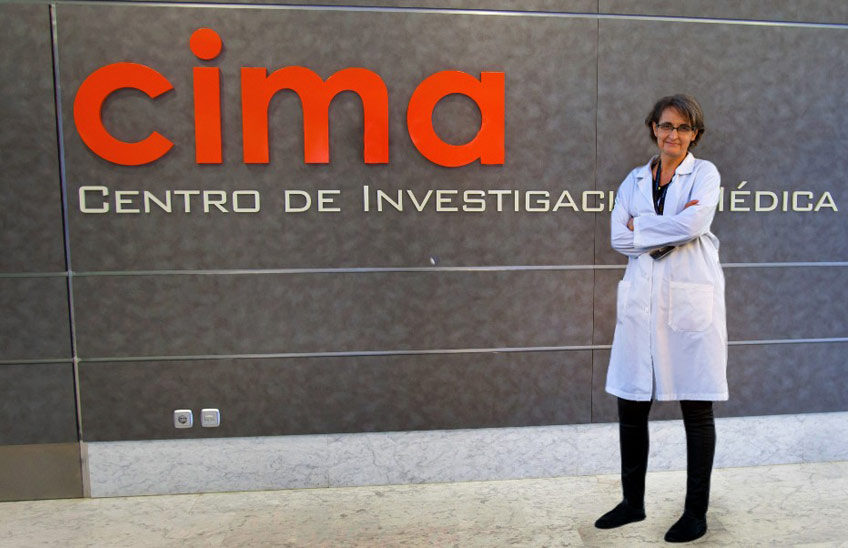One of the causes of liver cancer aggressiveness found
Researchers from Cima University of Navarra, CNIO and CNB discover a 'molecular staple' that financial aid repairs broken DNA and hampers cancer treatment

01 | 02 | 2023
Researchers from Cima University of Navarra, the Spanish National Cancer Research Center (CNIO) and the Spanish National Center for Biotechnology (CNB) have discovered one of the causes of the aggressiveness of liver cancer. The work, coordinated by Drs. Puri Fortes, Óscar Llorca and Fernando Moreno-Herrero, respectively, reveals how one of the DNA repair systems used by tumor cells to escape treatment works.
In the rich cellular activity there are constantly malfunctions, so it is essential that cells have good error-correction mechanisms. To kill cancer cells, on the other hand, it is important to provoke errors. Radiation and chemotherapy cause them by breaking the cells' DNA. However, there are tumor cells that have an exceptionally efficient DNA repair machinery, and this allows them to escape cancer treatment.
In liver cancer with worse prognosis
"Our team at Cima recently discovered that about half of hepatocellular carcinoma patients (the most common liver cancer) produce an RNA molecule, called NIHCOLE, which is present mainly in the most aggressive tumors and is associated with a poor prognosis," explains Dr. Puri Fortes, a researcher in the Gene Therapy and Gene Regulation Program at Cima. At partnership with the CNIO and CNB, they concluded that NIHCOLE financial aid repairs broken DNA very effectively, and that is why radiotherapy is less effective in tumors where it is present. Thus, by eliminating NIHCOLE, cancer cells treated with radiotherapy die more easily.
But the researchers did not know the molecular mechanism by which NIHCOLE facilitates the repair of DNA breaks. The work now published in Cell Reports explains it: NIHCOLE forms a bridge that joins broken DNA fragments.
"NIHCOLE interacts simultaneously with proteins that recognize the two ends of a fragmented DNA, as if stapling them together," explain Llorca and Moreno-Herrero.
Magnetic nanopinches for DNA stretching
To understand how NIHCOLE works, Fernando Moreno-Herrero's group has used magnetic tweezers, a nanotechnology technique that makes it possible to study the physical characteristics of molecules separately.
Researchers have designed a DNA molecule that mimics a broken DNA, and that allows them to detect the junction between the two fragmented ends. First, they attach a tiny magnetic bead, a thousandth of a millimeter in size, to one end of the DNA; then, using magnetic tweezers, they pull on that end. The length of the stretched DNA indicates whether it is a reconstituted DNA, in which the broken ends of the DNA have been glued together, or whether the DNA is still broken.
For the authors of work these data show that NIHCOLE "confers advantages to tumor cells by assisting them in repairing DNA breaks, sustaining malignant proliferation of cancer cells despite the accumulation of DNA damage resulting from the stress produced by cell division itself."
Understanding this mechanism may help design strategies to combat liver cancer with the worst prognosis. "The use of drugs that block or distort this structure or inhibit NIHCOLE may improve the efficacy of radio- or chemotherapy," say the authors of work.
This work has been funded by public and private grants, such as the Ministry of Science and Innovation and the association Española Contra el Cáncer.
Jobs from reference letter:
→ De Bragança et al. APLF and long non-coding RNA NIHCOLE promote stable DNA synapsis in non-homologous end joining. Cell Reports, 2023.
→ Unfried et al, Long Noncoding RNA NIHCOLE Promotes Ligation Efficiency of DNA Double-Strand Breaks in Hepatocellular Carcinoma. Cancer Research. 2021.
→ Illustration in high available




